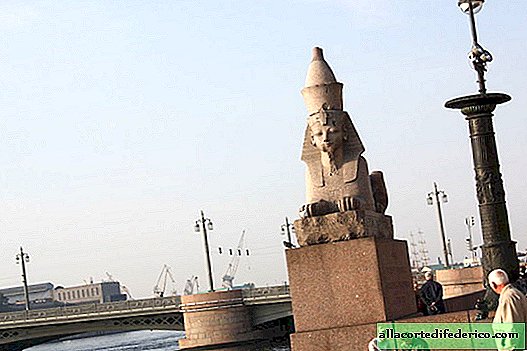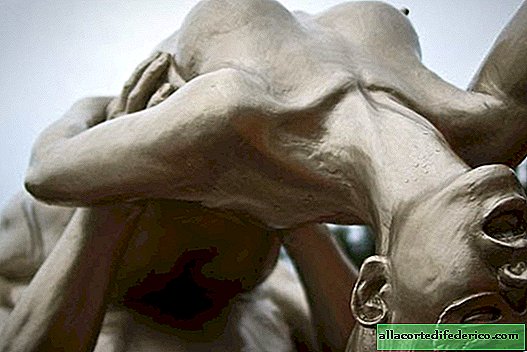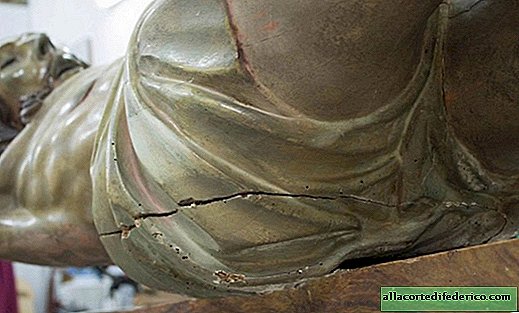How translations on ancient sphinxes in St. Petersburg are translated
The sphinxes that are installed on the University Embankment in St. Petersburg, more than 3.5 thousand years. Probably, these are the most ancient monuments of the northern capital, except for the exhibits of the Hermitage. Syenite lion statues with the face of a pharaoh originally decorated the temple complex near Thebes, but after a series of incidents that were largely random in nature, they ended up in the capital of the Russian Empire.

Sphinxes were created in Ancient Egypt during the reign of the pharaoh of the XVIII dynasty Amenhotep III, in the XIV century BC. This was the heyday of ancient Egyptian civilization, accompanied by the construction of numerous temple complexes. For one of them, presumably the requiem, the lion statues with the face of Pharaoh Amenhotep III were made.
Since the decline of Ancient Egypt, its territory passed from one conqueror to another, and at the beginning of the 19th century, when the events of interest to us took place, it belonged to the Ottoman Empire. The rulers of Egypt were not very sensitive to the cultural heritage of the ancient Egyptians, so everything that could be taken out and sold left the country. One of the main places where lovers of antiquities from Europe came together was Alexandria. Wealthy Europeans and diplomats bought up objects of art and even sphinxes. It was in this port city that Andrei Nikolayevich Muravyov, a Russian traveler, historian and Orthodox writer, ended up in 1830. He saw two sphinxes that were offered for sale and, completely fascinated by them, sent a letter to the Russian ambassador with an offer to purchase them. But while the letter traveled from the ambassador to Nicholas I, and from him to the Academy of Arts, the sphinxes were already sold to France.
Residents of St. Petersburg and guests of the capital would have been deprived of the pleasure of admiring the Sphinxes, if not for one circumstance. Just in the summer of 1830, the Second French Revolution took place in France, so the deal had to be canceled, and a couple of sphinxes eventually ended up in St. Petersburg in 1832. The statues were installed on the University Embankment in 1834, after completion of the necessary construction work.

Despite the fact that Egyptian hieroglyphs were deciphered at the beginning of the 19th century, the inscriptions on the St. Petersburg sphinxes were translated only in 1912. On the sphinxes there are two inscriptions on each side, as well as inscriptions on the chest and between the paws. All of them contain variations of the title of Amenhotep III and praise the main Egyptian deities. It should be noted that these inscriptions contain traces of corrections that are associated with the history of Ancient Egypt. The fact is that after the death of Amenhotep III, his son Akhenaten ascended the throne. The new pharaoh went down in Egyptian history as a large-scale religious reformer and fighter with the cult of the god Amun. During his reign, all texts and inscriptions mentioning the name of Amun were completely erased or forwarded.

Experts who studied the inscriptions on the sphinxes believe that they suffered the same fate: the original text was hewn, and a new one was carved in its place. Moreover, scientists found that the text was corrected at least twice: during the reign of Akhenaten and in a later period, when there was a return to the old cult.
The texts on the sphinxes are somewhat similar, so we cite a translation of one of them: “Gore live, a mighty little calf that shone in truth. Gore of gold, straightened Nubians, seized their lands. King of Upper and Lower Egypt,“ Nebmar the offspring of Ra. ”Son of Ra, "Amenhotep, ruler of Thebes," who sacrifices monuments rising to the sky like four pillars that carry heaven. Lord of both lands, "Amenhotep, ruler of Thebes, the favorite of Amon, who was given life like Ra forever."
The earthly life of the pharaoh was not eternal, but the memory of him survived more than one millennium. And even in St. Petersburg, which is located far from the fertile Nile valley, the sphinxes of Ancient Egypt stand, keeping in themselves a particle of the history of a great civilization.


















